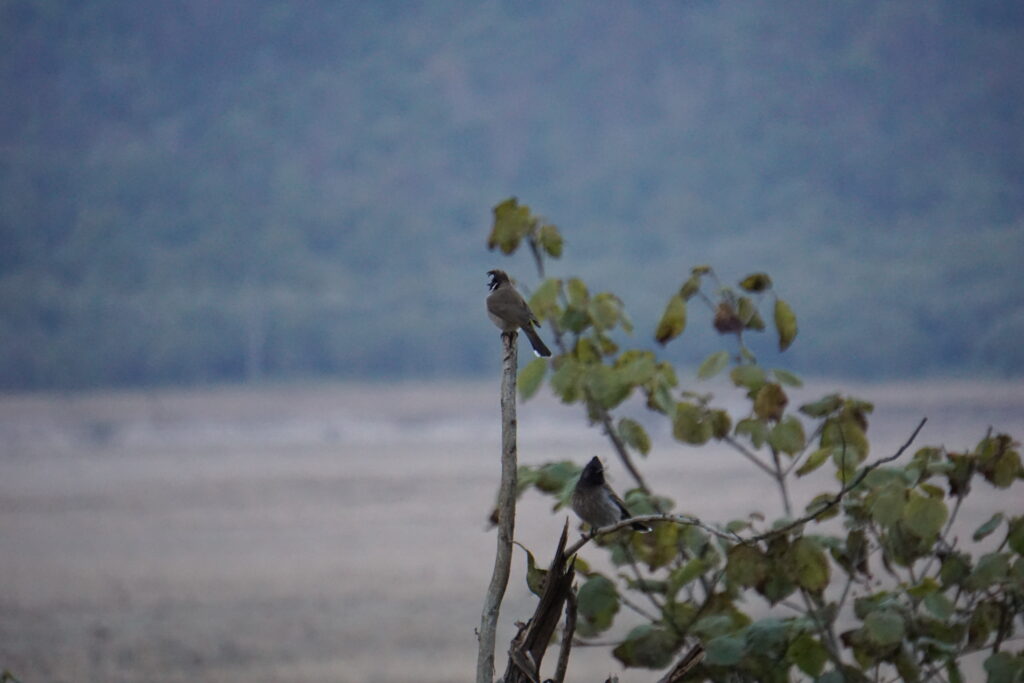Jim Corbett National Park is a fantastic area to see and see a variety of birds from different species in addition to seeing tigers. Because of the national park’s numerous lakes, rivers, valleys, and dense forest of moist deciduous trees, it provides the ideal habitat for a wide variety of birds, making Jim Corbett one of the most significant bird conservation places in the nation.
The park is home to endangered species, including the Black-bellied Tern, Red-headed Vulture, and White-rumped Vulture. Patience and high-quality binoculars are essential for birding since they make it easier to identify birds perched on branches. The grasslands of the Dhikala and Bijrani zones, the hilly terrain of the Durgadevi zone, the banks of the Ramganga River, and the Kalagarh reservoir are a few of the well-liked locations in Jim Corbett National Park for birdwatching.
Famous Bird Species in Jim Corbett National Park to See
The Great Hornbill, Himalayan Woodpecker, Blue-throated Barbet, Brown Fish Owl, Common Kingfisher, Greater Coucal, Indian Peafowl, Crested Serpent Eagle, Black Kite, Green Bee Eater, Himalayan Flameback, and Oriental Magpie Robin are a few of the well-known birds that can be seen while visiting the park.
Great Hornbill (Buceros bicornis): Among the various birds that may be seen at Jim Corbett National Park is the Great Hornbill, which is easily identified by its concave beak and bright casque. The largest species of hornbill found in India, the bird has been revered as a talisman by many societies throughout history due to its size and grandeur. The Great Hornbill is mostly found in Southeast Asia, India, Nepal, and the Indonesian island of Sumatra. It prefers to build its nests atop big trees that grow in mountainous terrain.
Himalayan Woodpecker (Dendrocopos Himalayensis): One of the species found in Jim Corbett National Park is the Himalayan Woodpecker, which is mostly found in India, Nepal, Bhutan, Pakistan, and Afghanistan. This medium-sized woodpecker is distinguished by its spotted feathers, black back, and downward-running white spots on its shoulders. In males, the top of the head has a noticeable red hue, whereas in females it is black.
Blue-throated Barbet (Psilopogon Asiaticus): The foothills of the Himalayas and Southeast Asia are home to the Blue-throated Barbet, a bird that is indigenous to the Asian continent. The rest of its body is a vivid green colour, revealing a crimson crown, and it gets its name from its blue neck. The Blue-throated Barbet is a forest bird that is usually found in tree cavities or near fruit-bearing trees.
Brown Fish Owl (Ketupa Zeylonensis): With its ear tufts stretched horizontally, the Brown Fish Owl is a bigger member of its species and has a distinctive appearance. It has a reddish-brown back and somewhat paler underparts, and its entire body is speckled with dark bars. The Brown Fish Owl inhabits denser areas of the forest and, considering its diet, which primarily consists of fish, frogs, prawns, and lizards, spends most of its time near water.
Common Kingfisher (Alcedo Atthis): The Common Kingfisher is a tiny species of bird that is found throughout Europe, Asia, and Africa. The Common Kingfisher is a bird of prey that seeks out tiny fish to eat along water bodies such as rivers, lakes, and streams. It is distinguished by its blue and orange plumage. When diving into the water, the bird’s large, pointed bill assists it in catching its meal.
The Ideal Time to Visit Jim Corbett National Park to See Birds
Since many migrating birds can be seen during these months in addition to native ones, the winter months of November through March are thought to be the best times to visit Jim Corbett National Park for bird viewing. Summertime is a great time to visit the park because numerous migratory bird species can be spotted there.


